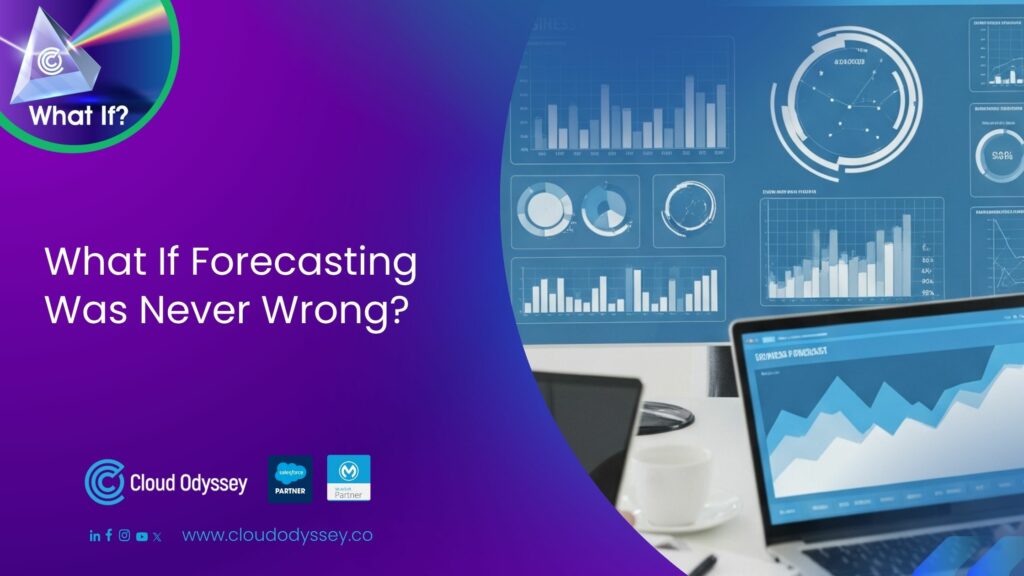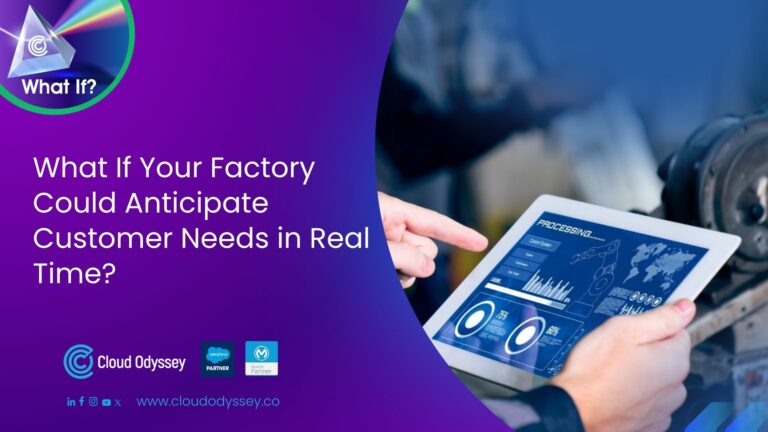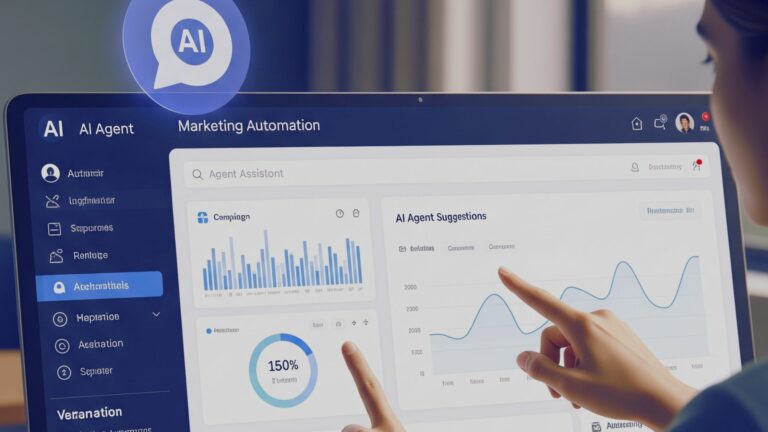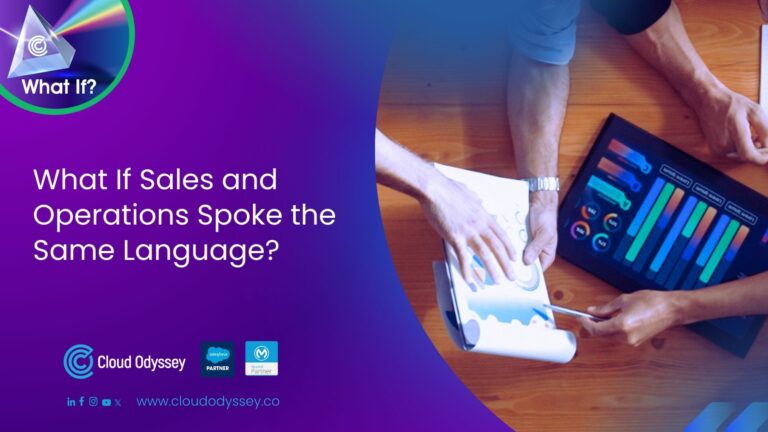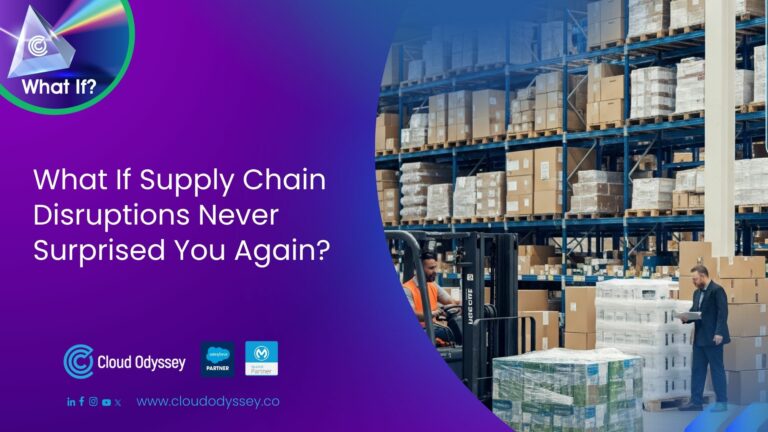Redefining Precision Forecasting for Manufacturing with Salesforce and Agentforce
In manufacturing, an inaccurate forecast doesn’t just mean missed revenue—it disrupts entire ecosystems. A flawed estimate triggers inefficient production schedules, supplier chaos, idle factory lines, inflated inventories, and poor customer experience. The costs ripple far beyond spreadsheets—they hit your margins, workforce morale, and customer trust.
That’s why the most critical transformation in manufacturing isn’t automation or robotics. It’s forecasting intelligence.
And Salesforce, with its purpose-built Salesforce Manufacturing Cloud, Salesforce Data Cloud, and Agentforce, is answering a once-rhetorical question with a powerful proposition:
What if forecasting was never wrong?
The Problem: Where Traditional Forecasting Breaks Down
Forecasting in manufacturing often fails for reasons that transcend technology:
| Issue | Root Cause |
| Lagging, manual models | Rely on historical sales data, ignoring real-time market signals. |
| Siloed inputs | CRM, ERP, PLM, distributor data, and supplier intel don’t talk to each other. |
| Human-centric overrides | Planners manually adjust forecasts based on intuition, not data. |
| No feedback loop | Forecasts rarely self-correct during a production cycle. |
| Limited partner visibility | Manufacturers lack real-time insight into distributor pipelines or machine behaviour post-sale. |
Even advanced ERP systems fall short—they’re execution engines, not insight generators.
Enter Salesforce Manufacturing Cloud + Data Cloud + Agentforce
A Platform Approach to Self-Healing Forecasting
Where traditional tools stop at generating a static forecast, Salesforce’s architecture continuously learns, adapts, and responds. It combines three powerhouses:
1. Salesforce Manufacturing Cloud: Forecasts Built on Commitments
Salesforce Manufacturing Cloud provides Sales Agreements and Account-Based Forecasting, anchoring forecasts in real contractual volume expectations. Sales teams and planners can:
- Lock in and track partner commitments.
- See actual vs. forecasted consumption in real time.
- Create forecast versions per region, SKU, or product family.
Use Case: If a distributor committed to 10,000 units/quarter, and actual off-take is 6,000 in Q1, the system alerts stakeholders, updates downstream production plans, and revises Q2 forecasts automatically.
2. Salesforce Data Cloud: Unified Signal Ingestion
Forecasting needs signals beyond sales:
- IoT data from machines in the field
- Service Cloud cases indicating product wear-out
- Campaign engagement reflecting future product demand
- Partner Portal data showing distributor stock levels
Salesforce Data Cloud connects and harmonizes these into a unified customer + asset graph in real time.
Example: A spike in IoT sensor readings indicating machine overheating may predict spare part demand. When merged with regional service case volumes and distributor re-order data, Data Cloud feeds a 360-degree demand signal into forecasting.
3. Agentforce: The Brain Behind the Forecast
Agentforce is not just AI. It’s a network of intelligent, modular, autonomous agents built using Salesforce’s LLM-powered architecture. These agents specialize in continuous monitoring, adjustment, and proactive resolution.
Each agent operates under a scoped role, collaborating with others like a digital workforce. They are built using Apex, Einstein AI, LLM APIs, and MuleSoft connectors.
Industry-Specific Applications: Where Precision Matters Most
Automotive Manufacturing: Semiconductor Crisis Prevention
The Challenge: The 2021-2023 semiconductor shortage cost the auto industry $210 billion globally. Traditional forecasting failed to predict the perfect storm of pandemic demand surge and supply base consolidation.
Salesforce Solution in Action:
- IoT Integration: Connected vehicle data reveals actual chip usage patterns vs. planned
- Supplier Risk Agent: Monitors tier-2 and tier-3 supplier financial health and capacity utilization
- Demand Pattern Recognition: Distinguishes between temporary demand spikes and structural shifts
Real Impact: A major OEM using this approach maintained 94% production schedule adherence during the 2022 supply crunch, while competitors averaged 67%.
Key Metrics:
- Reduced safety stock requirements by 35% while improving availability
- Cut emergency sourcing costs by $47M annually
- Improved supplier relationship scores by 28%
Aerospace & Defense: Long-Cycle Precision
The Challenge: Aircraft components have 20-30 year lifecycles with irregular replacement patterns. A single forecast error can mean $50M in stranded inventory or $200M in production delays.
Salesforce Approach:
- Predictive Maintenance Integration: Combines flight hours, environmental conditions, and component stress data
- Regulatory Change Monitoring: Agents track FAA/EASA regulatory updates that impact demand
- Fleet Analytics: Real-time visibility into global fleet utilization and retirement schedules
Transformation Story: A Tier 1 aerospace supplier reduced forecast error for aftermarket parts from 34% to 8%, enabling $120M inventory reduction while improving delivery performance to 98.7%.
Electronics Manufacturing: Component Allocation Optimization
The Challenge: Electronics manufacturers face volatile demand with 200+ components per product, each with different supply constraints and market dynamics.
Solution Framework:
- Component Lifecycle Management: Predicts end-of-life transitions and allocation priorities
- Design Win Intelligence: Integrates customer roadmaps and competitive intelligence
- Market Signal Processing: Combines sell-through data, social sentiment, and economic indicators
Results: A consumer electronics manufacturer improved forecast accuracy for critical components from 71% to 91%, reducing expedite costs by $23M annually while improving customer delivery by 15%.
Chemical & Process Manufacturing: Batch Optimization
The Challenge: Chemical manufacturers must optimize across multiple variables: yield rates, equipment campaigns, seasonal demand patterns, and raw material quality fluctuations.
Advanced Capabilities:
- Yield Prediction Modeling: Uses process parameters and raw material quality data
- Campaign Optimization: Balances setup costs with demand fulfillment
- Market Price Integration: Incorporates commodity price forecasts into production decisions
Impact: A specialty chemicals manufacturer increased overall equipment effectiveness (OEE) by 12% while reducing inventory by 28%, generating $31M in annual value.
Forecast Agents in Action: Real-World Scenarios
Agent 1: Raw Material Risk Forecaster
Goal: Predict shortages in critical raw materials and update forecasts accordingly.
- Pulls lead time and quantity data from SAP via MuleSoft.
- Monitors supplier updates and global shipping data.
- Calculates the probability of shortage.
- Recommends production delays or alternate forecasts for impacted SKUs.
Sample Output: “Aluminum lead time for Vendor X has increased by 15 days. Recommend reducing Q3 forecast for Widget Alpha by 8% and reallocating production to Widget Beta.”
Agent 2: Sales Spike Pattern Agent
Goal: Detects abnormal spikes in partner demand and validates authenticity.
- Cross-verifies distributor order data, POS data (if available), and historical patterns.
- Flags anomalies and checks for cannibalization or forward buying.
- Escalates suspicious trends to demand planners or auto-corrects based on history.
Output: “Distributor Y ordered 3X typical volumes. Previous similar behavior occurred pre-price hike. Adjust rolling forecast cautiously by +10%, not 200%.”
Agent 3: Post-Sales IoT Feedback Agent
Goal: Monitor installed machinery for wear-out, replacement cycles, and product performance.
- Ingests data from connected products.
- Maps runtime vs. failure thresholds using historical patterns.
- Predicts spare parts demand or upgrade opportunities.
Output: “30% of machines in region APAC are approaching 90% lifespan usage. Forecast spike in gear module demand in 60 days.”
Agent 4: Forecast Reconciliation Orchestrator
Goal: Orchestrates inputs from all other agents and finalizes the adaptive forecast.
- Uses Einstein Prediction Builder to weight inputs.
- Applies scenario modeling: best case, worst case, expected case.
- Automatically syncs changes to Manufacturing Cloud, Tableau CRM dashboards, and alerts planning teams.
Technical Implementation: High-Level Architecture
| Layer | Technology Stack |
| Data Ingestion | MuleSoft, Streaming APIs, Data Cloud connectors |
| AI Logic & Rules | Apex + Agentforce Framework + Einstein AI |
| Forecast Management | Manufacturing Cloud + Account-Based Forecasting |
| Insights & Reporting | Tableau CRM, Slack Alerts, Forecast Dashboards |
Trigger Flow
- Signals are streamed into Data Cloud → unified object graph is updated.
- Agents monitor deltas (order velocity, IoT, supply shifts).
- Einstein generates probability-weighted forecasts.
- Agents simulate impact scenarios.
- Forecast is updated → notifications sent → production or sales plans adjusted.
The Future-State Vision
Integration with Industry 4.0: The Autonomous Factory
The convergence of intelligent forecasting with manufacturing automation creates unprecedented possibilities:
Lights-Out Manufacturing Enabled:
- Forecasting agents communicate directly with production control systems
- Demand signals trigger automated production schedule optimization
- Quality sensors feed back into demand predictions for next-generation products
- Supply chain orchestration becomes fully autonomous with human oversight
Digital Twin Integration:
- Physical factory operations mirror digital forecast models in real-time
- Virtual production runs validate forecast scenarios before physical execution
- Continuous optimization loops between digital and physical manufacturing
Sustainability Revolution: The Circular Manufacturing Economy
Precision forecasting becomes the foundation for sustainable manufacturing:
Waste Elimination at Scale:
- Predict exact material requirements, eliminating overproduction waste
- Optimize transportation routes and frequencies, reducing carbon footprint by 25-40%
- Enable just-in-time circular economy practices with precise timing
Resource Optimization:
- Water and energy consumption predictions integrated with demand forecasting
- Renewable energy procurement aligned with production schedules
- Raw material sourcing optimized for both cost and environmental impact
Circular Economy Enablement:
- Predict product end-of-life timing for remanufacturing planning
- Optimize reverse logistics for maximum material recovery
- Enable service-based business models with predictable product performance
Supply Chain Resilience: Anti-Fragile Networks
Moving beyond supply chain risk management to anti-fragile systems that grow stronger under stress:
Dynamic Network Reconfiguration:
- Real-time supplier network optimization based on predictive risk modeling
- Automatic diversification strategies triggered by forecast confidence intervals
- Geographic risk spreading with demand-supply matching optimization
Ecosystem Intelligence:
- Cross-industry signal sharing for macro-economic demand prediction
- Collaborative forecasting networks among non-competing manufacturers
- Integration with government and economic data for policy impact prediction
Customer Experience Transformation: Mass Personalization
Intelligent forecasting enables the holy grail of manufacturing – mass customization at scale:
Hyper-Personalized Production:
- Individual customer demand prediction enabling lot-size-one manufacturing
- Real-time customization based on emerging preference signals
- Predictive customer lifecycle management with proactive product evolution
Experience Orchestration:
- Seamless integration between sales, production, and delivery forecasting
- Predictive customer service with proactive issue resolution
- Dynamic pricing optimization based on demand and capacity forecasting
Market Creation:
- Identify latent demand patterns before customers recognize them
- Product development guided by predictive market intelligence
- First-mover advantage through superior demand sensing
The Manufacturing Operating System of Tomorrow
Unified Intelligence Platform:
- Single source of truth, integrating all manufacturing intelligence
- Cross-functional orchestration from R&D through aftermarket service
- Continuous learning systems that evolve with business complexity
Human-AI Collaboration:
- Augmented decision-making with AI providing insights, humans providing judgment
- Predictive skill planning aligned with demand forecasting
- Knowledge worker productivity amplified by intelligent assistants
Ecosystem Orchestration:
- Supply chain as a service with plug-and-play partner integration
- Shared intelligence networks creating industry-wide optimization
- Standards-based interoperability enabling rapid ecosystem evolution
Transform Your Manufacturing Operations with Cloud Odyssey
The future of intelligent manufacturing forecasting is here, but the journey from traditional planning to AI-powered precision requires expert guidance and proven implementation strategies. Cloud Odyssey, a premier Salesforce consulting partner, specializes in helping manufacturing companies unlock the full potential of Salesforce Manufacturing Cloud, Data Cloud, and Agentforce.
Our manufacturing transformation experts bring deep industry knowledge and technical expertise to design, implement, and optimize intelligent forecasting solutions tailored to your unique operational challenges. Whether you’re dealing with complex supply chain dynamics in automotive, long-cycle precision requirements in aerospace, or volatile component allocation in electronics manufacturing, Cloud Odyssey has the proven methodologies to deliver measurable results.
We don’t just implement technology—we transform manufacturing operations. Our comprehensive approach includes business process optimization, change management, user adoption strategies, and ongoing support to ensure your intelligent forecasting system delivers the 25-40% accuracy improvements and millions in cost savings that industry leaders are already achieving.
Ready to revolutionize your manufacturing forecasting? Contact Cloud Odyssey today to schedule a strategic consultation and discover how we can help your organization achieve forecast precision that seemed impossible just years ago. The manufacturing leaders of tomorrow are being built today—let us help you join their ranks.
Final Thoughts: Forecasting as a Competitive Advantage
Forecasting will never be “perfect”—but with Salesforce and Agentforce, it becomes proactive, explainable, and always improving.
In an era where demand changes overnight and supply chains break in hours, precision forecasting isn’t just about planning—it’s about resilience. Companies that master intelligent forecasting today will define the manufacturing landscape of tomorrow.
The transformation goes beyond technology—it’s about reimagining manufacturing as an intelligent, responsive, sustainable system that creates value for all stakeholders while building the foundation for the next industrial revolution.
So, what if forecasting was never wrong?
With Salesforce, forecasting becomes something more powerful than ever before: self-correcting, self-improving, and ultimately, transformative.



